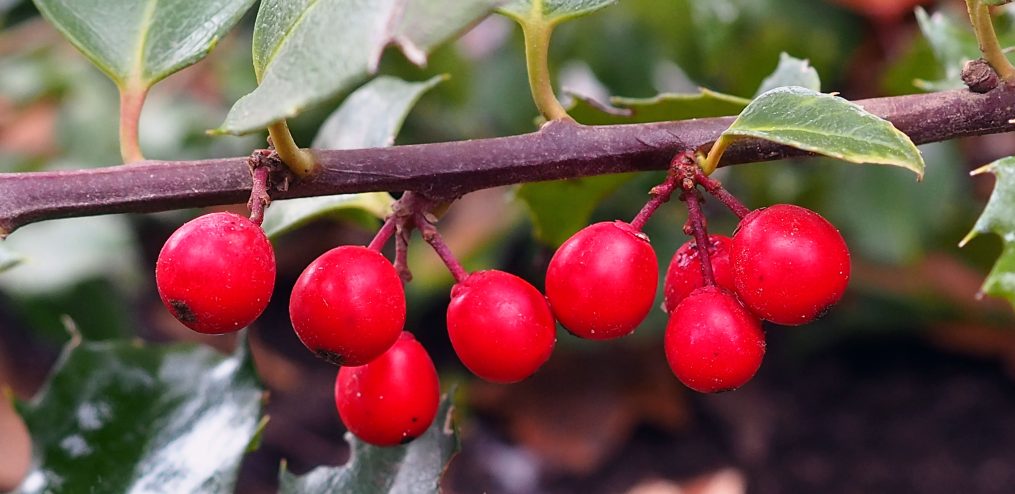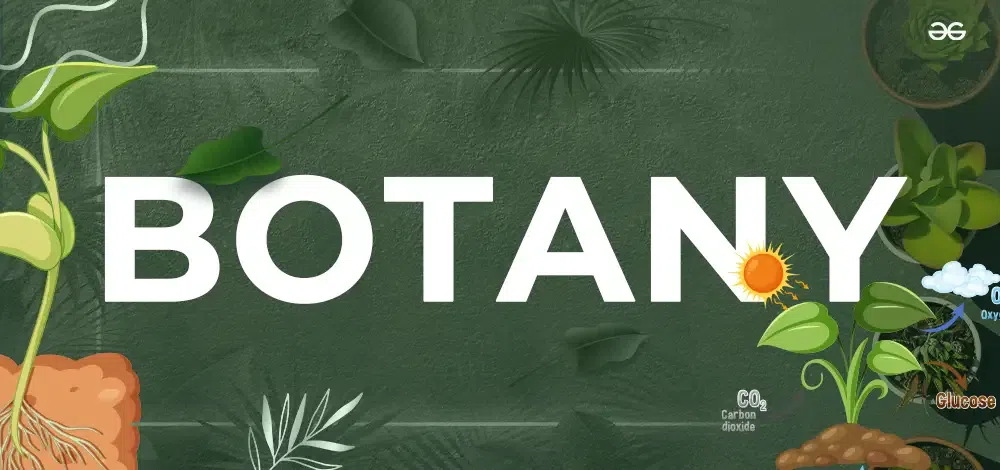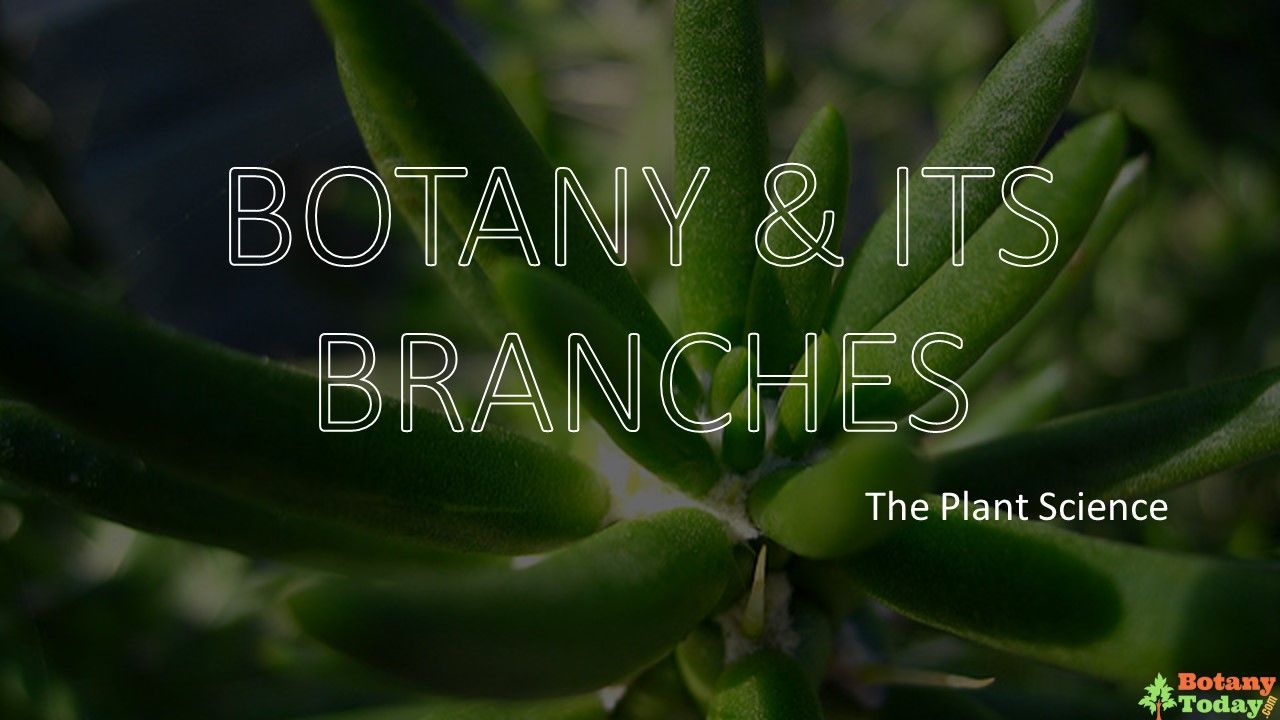Botany, 1 Of The Branch Of Biology: Exploring the World of Plants
Botany, the scientific study of plants, encompasses a vast and captivating realm of life on Earth. From the tiniest mosses to the towering redwoods, plants play an indispensable role in shaping our planet’s ecosystems and sustaining life. In this exploration of botany, we delve into its various branches, from plant anatomy and physiology to ecology and evolution, unveiling the intricate wonders of the botanical world.
Introduction to Botany
Botany, often referred to as plant biology, is a branch of biology that focuses on the study of plants, including their structure, growth, reproduction, metabolism, and evolution. It is a diverse and interdisciplinary field that incorporates elements of genetics, ecology, chemistry, and environmental science. Botanists seek to understand the fundamental processes that govern plant life and their interactions with the environment.
Plant Anatomy and Morphology
One of the fundamental aspects of botany is the study of plant anatomy and morphology. Plant anatomy examines the internal structure of plants, including tissues, cells, and organs, while morphology deals with the external form and structure of plants. Through microscopic examination and dissection, botanists unravel the intricate organization of plant tissues such as roots, stems, leaves, and flowers, gaining insights into their functions and adaptations.
Photosynthesis: The Green Miracle
Photosynthesis, the process by which green plants and other organisms convert light energy into chemical energy, is perhaps the most crucial biological phenomenon on Earth. Through the intricate biochemical pathways of photosynthesis, plants capture sunlight, carbon dioxide, and water to produce glucose and oxygen, fueling the primary productivity of ecosystems and sustaining life as we know it. Botanists study the mechanisms of photosynthesis to unravel its complexities and enhance our understanding of plant biology.
Plant Physiology: Functions and Processes
Plant physiology explores the physiological processes that govern plant growth, development, and response to environmental stimuli. From nutrient uptake and water transport to hormone regulation and stress tolerance, plants exhibit a remarkable array of physiological adaptations that enable them to thrive in diverse habitats. Botanists investigate the mechanisms underlying these processes, employing experimental techniques and advanced technologies to unravel the mysteries of plant physiology.
Plant Reproduction and Development
The reproductive strategies of plants are as diverse as the species themselves, ranging from simple spore dispersal in ferns to complex pollination mechanisms in flowering plants. Botanists study the reproductive structures and mechanisms of plants, including flowers, fruits, seeds, and cones, to understand the evolutionary drivers of plant reproduction and the ecological interactions that shape plant communities. By unraveling the mysteries of plant reproduction, botanists contribute to our understanding of plant evolution and biodiversity.
Plant Ecology: Interactions with the Environment
Plant ecology examines the relationships between plants and their biotic and abiotic environments, exploring topics such as plant distribution, community dynamics, and ecosystem functioning. From the towering forests of the tropics to the arid deserts of the world, plants inhabit a wide range of habitats and play critical roles in shaping ecosystems and regulating biogeochemical cycles. Botanists employ field studies, remote sensing, and modeling approaches to investigate the complex interactions between plants and their environment.
Plant Evolution: Unraveling the Tree of Life
The study of plant evolution traces the origins and diversification of plant life over millions of years, from ancient algae to modern-day angiosperms. Botanists reconstruct the evolutionary history of plants using molecular phylogenetics, comparative morphology, and fossil evidence, unraveling the evolutionary relationships between different plant groups and elucidating the patterns and processes of plant evolution. By piecing together the evolutionary puzzle of plants, botanists shed light on the origins of biodiversity and the mechanisms driving evolutionary change.
Applied Botany: Bridging Science and Society
Applied botany encompasses the practical applications of botanical knowledge to address real-world problems and improve human well-being. From agriculture and horticulture to medicine and conservation, botanists play a crucial role in developing sustainable solutions to global challenges such as food security, human health, and environmental degradation. By integrating scientific research with societal needs, applied botany contributes to the development of innovative technologies and policies that promote the responsible stewardship of plant resources.
Conservation Biology: Safeguarding Plant Diversity
In an era of unprecedented environmental change, the conservation of plant diversity has become a pressing concern for botanists and conservationists alike. Habitat loss, climate change, invasive species, and overexploitation threaten plant species and ecosystems worldwide, underscoring the urgent need for conservation action. Botanists engage in conservation biology efforts to identify and protect endangered plant species, restore degraded habitats, and promote sustainable land management practices. Through collaborative partnerships and public outreach, botanists advocate for the preservation of plant diversity and the conservation of our natural heritage.
Celebrating the Wonder of Plants
Botany offers a fascinating journey into the world of plants, revealing the intricate beauty and complexity of the botanical realm. From the molecular mechanisms of photosynthesis to the ecological dynamics of plant communities, botanists continue to unravel the mysteries of plant life and its interactions with the environment.
As stewards of plant diversity and champions of scientific inquiry, botanists play a crucial role in advancing our understanding of plants and their significance for life on Earth. By celebrating the wonder of plants and nurturing our connection with the natural world, we can inspire future generations to appreciate and protect the invaluable treasures of botanical diversity.
Ethnobotany: Exploring Traditional Plant Knowledge
Ethnobotany is an interdisciplinary field that investigates the relationship between plants and people, focusing on the cultural, historical, and ecological dimensions of traditional plant knowledge. From indigenous healing practices to culinary traditions, plants have played a central role in human societies for millennia, serving as a source of food, medicine, shelter, and spiritual significance. Ethnobotanists work closely with indigenous communities to document and preserve traditional plant knowledge, recognizing the importance of indigenous perspectives in shaping our understanding of plants and their uses.
Plant Biotechnology: Unlocking the Potential of Genetic Engineering
Plant biotechnology harnesses the power of genetic engineering to modify plants for various purposes, including crop improvement, pharmaceutical production, and environmental remediation. By introducing novel traits into plants, such as pest resistance, drought tolerance, or increased nutritional value, biotechnologists aim to enhance crop productivity, reduce chemical inputs, and address global challenges such as food insecurity and climate change. Despite its potential benefits, plant biotechnology also raises ethical, environmental, and socio-economic concerns, prompting ongoing debates about the responsible use and regulation of genetically modified organisms (GMOs).
Plant-Insect Interactions: Exploring Coevolutionary Relationships
Plant-insect interactions represent a fascinating example of coevolutionary relationships between plants and herbivorous insects. Plants have evolved a diverse array of defense mechanisms to deter herbivory, including physical barriers, chemical toxins, and volatile compounds that attract natural enemies of herbivores.
In response, herbivorous insects have evolved counter-adaptations to overcome plant defenses, such as detoxification enzymes, behavioral avoidance, or symbiotic relationships with microbial associates. Understanding the dynamics of plant-insect interactions sheds light on the ecological processes that drive species diversification and ecosystem functioning.
Plant-Fungal Interactions: Mycorrhizal Symbioses and Pathogenic Relationships
Plants form complex relationships with fungi, ranging from mutualistic symbioses to parasitic infections. Mycorrhizal fungi form symbiotic associations with plant roots, enhancing nutrient uptake and improving plant growth in exchange for carbon resources. In contrast, plant pathogens such as rusts, smuts, and powdery mildews can cause devastating diseases that threaten agricultural productivity and natural ecosystems. Botanists study the molecular mechanisms of plant-fungal interactions to develop strategies for disease management and harness the beneficial potential of fungi in agriculture and forestry.
Plant-Invasive Species: Ecological Impacts and Management Strategies
Invasive plant species pose a significant threat to native biodiversity, ecosystems, and economies worldwide. Introduced species can outcompete native plants, disrupt ecological processes, alter habitat structure, and increase the vulnerability of ecosystems to disturbances such as fire, flooding, or climate change. Botanists investigate the ecological impacts of invasive species and develop management strategies to control their spread, restore affected habitats, and mitigate the socio-economic consequences of biological invasions. By understanding the mechanisms of invasion success and ecological resilience, botanists contribute to the conservation and restoration of native plant communities.
Plant Conservation Genetics: Preserving Genetic Diversity
Plant conservation genetics combines principles of genetics, ecology, and conservation biology to study the genetic diversity, population structure, and evolutionary potential of endangered plant species. Genetic diversity is essential for the long-term survival and adaptability of plant populations, enabling them to withstand environmental changes, disease outbreaks, and other threats. Botanists use molecular techniques such as DNA sequencing, microsatellite analysis, and genotyping-by-sequencing to assess the genetic health of endangered plants, guide conservation efforts, and prioritize conservation actions to maximize the preservation of genetic diversity.
Urban Botany: Exploring Plants in Cities
Urban botany examines the ecology, diversity, and functions of plants in urban environments, from parks and gardens to vacant lots and street medians. Cities are home to a surprising variety of plant species adapted to urban conditions, including native plants, ornamental species, and invasive weeds. Urban botanists study the ecological roles of urban plants, such as carbon sequestration, air purification, temperature regulation, and habitat provision for wildlife. By promoting green infrastructure, urban greening initiatives, and citizen science engagement, urban botany contributes to the creation of healthy, resilient, and sustainable cities for people and nature.
Embracing the Diversity and Complexity of Plant Life
Botany offers a multifaceted exploration of the diversity and complexity of plant life, spanning disciplines from anatomy and physiology to ecology and genetics. From the microscopic world of plant cells to the global dynamics of ecosystems, botanists continue to unravel the mysteries of plants and their interactions with the environment. By embracing the wonder and beauty of plants and recognizing their essential roles in sustaining life on Earth, we can cultivate a deeper appreciation for the botanical world and inspire future generations to explore, protect, and celebrate the extraordinary diversity of plant life.
Plant Communication: Signaling and Interactions
Recent research has revealed that plants are far more dynamic and communicative than previously thought. Through chemical signaling, plants can detect and respond to environmental cues, as well as communicate with neighboring plants and other organisms. For instance, when attacked by herbivores, plants can release volatile organic compounds that serve as warning signals to nearby plants, triggering them to produce defensive chemicals in anticipation of an impending threat. This fascinating aspect of plant behavior highlights the interconnectedness of plant communities and the sophisticated strategies plants employ to survive and thrive in their environments.
Plant Pharmacology: Exploring Medicinal Properties
Plants have long been a rich source of medicinal compounds, providing humanity with a myriad of drugs and remedies for various ailments. Ethnobotanists and pharmacologists study the chemical composition and pharmacological properties of medicinal plants, seeking to identify bioactive compounds with therapeutic potential. From aspirin derived from willow bark to the cancer-fighting compounds found in the rosy periwinkle, plant-based medicines continue to play a vital role in modern healthcare. By investigating traditional herbal remedies and exploring the pharmacological mechanisms of plant compounds, researchers aim to discover new drugs and treatments for human diseases.
Plant Biogeography: Patterns of Plant Distribution
Plant biogeography examines the distribution patterns of plant species across geographic regions and their underlying ecological and evolutionary drivers. Factors such as climate, topography, soil type, and historical events shape the distribution of plant species, leading to the formation of distinct biomes, floristic regions, and biodiversity hotspots. Botanists use tools such as species distribution modeling, phylogeography, and paleobotany to reconstruct past distribution patterns and predict future changes in response to climate change and habitat fragmentation. Understanding the factors influencing plant distribution helps inform conservation efforts and ecosystem management strategies.
Plant Genome Sequencing: Unlocking Genetic Diversity
Advances in DNA sequencing technologies have revolutionized our ability to study plant genomes and unravel the genetic diversity within and between plant species. Plant genome sequencing projects provide insights into the evolutionary history, gene function, and adaptive traits of plants, facilitating crop improvement, biodiversity conservation, and evolutionary research. Comparative genomics allows researchers to identify genes associated with important agronomic traits, such as yield, disease resistance, and stress tolerance, paving the way for the development of improved crop varieties through breeding and genetic engineering.
Plant Microbiome: Exploring Microbial Partnerships
The plant microbiome encompasses the diverse community of microorganisms that inhabit the rhizosphere, phyllosphere, and endosphere of plants, influencing plant health, growth, and productivity. Beneficial microbes such as rhizobia, mycorrhizal fungi, and plant growth-promoting bacteria form symbiotic relationships with plants, enhancing nutrient uptake, suppressing pathogens, and improving plant resilience to environmental stress. Botanists investigate the composition and function of the plant microbiome using high-throughput sequencing and metagenomic approaches, aiming to harness the potential of microbial partnerships for sustainable agriculture and ecosystem restoration.
Plant Evolutionary Developmental Biology (Evo-Devo): Tracing Developmental Pathways
Plant evolutionary developmental biology, or Evo-Devo, explores the genetic and developmental mechanisms underlying the evolution of plant morphology, anatomy, and reproductive structures. By comparing the developmental processes of different plant species, researchers can infer the genetic changes responsible for the diversity of plant forms observed in nature. Evo-Devo studies have shed light on the evolutionary origins of key innovations such as flowers, seeds, and vascular tissues, providing insights into the mechanisms driving plant diversification and adaptation over millions of years.
Plant Phenomics: Integrating Phenotypic Data
Plant phenomics involves the comprehensive measurement and analysis of plant phenotypic traits, such as growth, morphology, physiology, and behavior, under different environmental conditions. High-throughput phenotyping platforms and imaging techniques enable researchers to collect large-scale phenotypic data sets, allowing for the identification of genetic markers associated with desirable traits in crops and model plant species.
Plant phenomics plays a crucial role in crop breeding programs, precision agriculture, and the study of plant-environment interactions, facilitating the development of resilient and productive crop varieties in the face of climate change and global food security challenges.
Conclusion: Embracing the Complexity of Plant Science
In conclusion, the field of botany encompasses a vast array of disciplines and research areas, each contributing to our understanding of the remarkable diversity and complexity of plant life. From the molecular mechanisms of plant signaling to the ecological dynamics of plant communities, botanists continue to unravel the mysteries of plants and their interactions with the environment.
By embracing interdisciplinary approaches and collaborative efforts, we can advance our knowledge of plant biology, address pressing global challenges, and cultivate a deeper appreciation for the vital role that plants play in sustaining life on Earth. As we continue to explore the wonders of the botanical world, let us celebrate the beauty, diversity, and resilience of plants, and strive to protect and preserve them for future generations.




